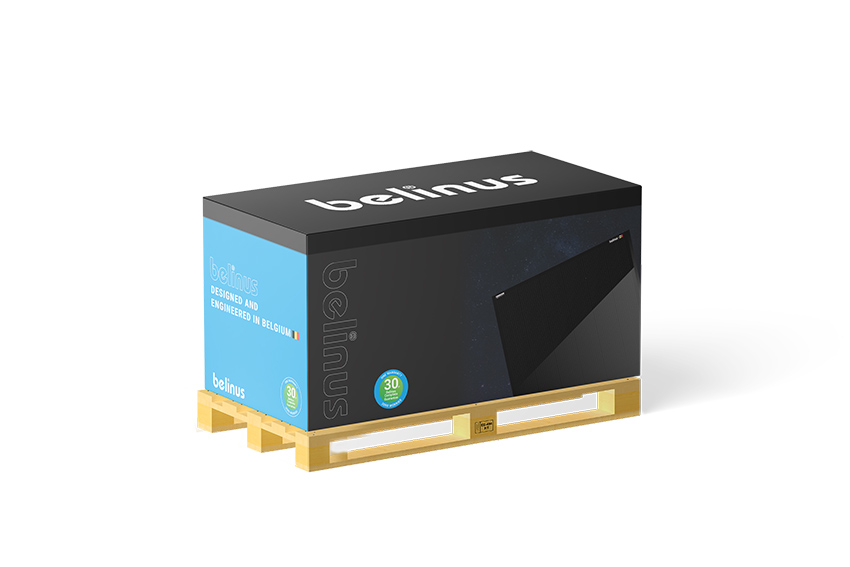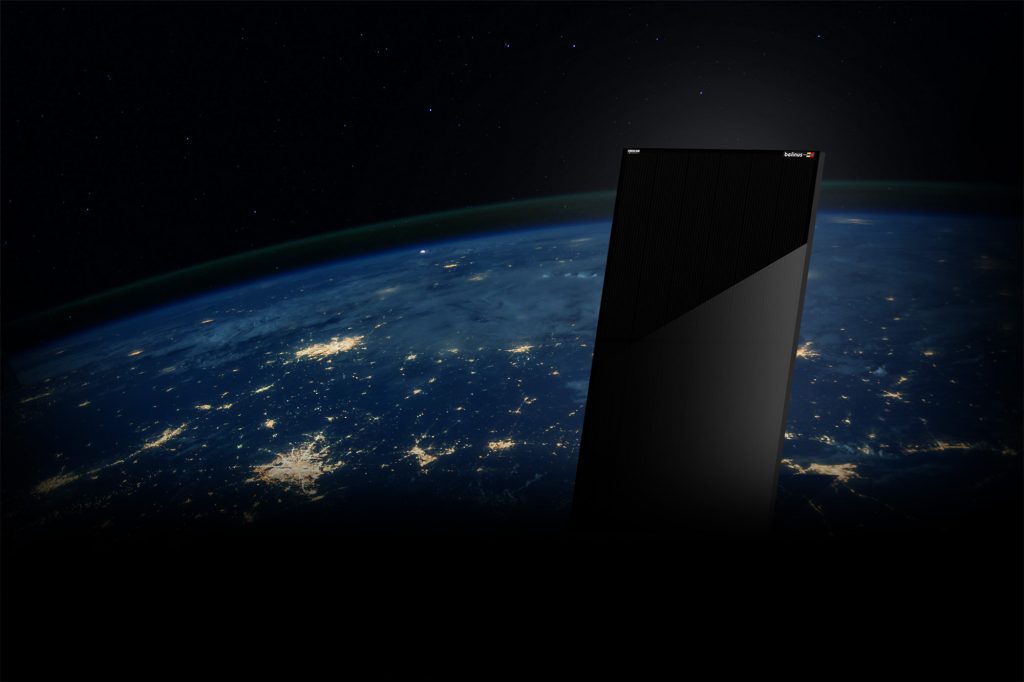Started in 2015 as a solar panel engineering and quality inspection service company, Belinus is a Belgian technology company with its headquarters in Leuven, Belgium, and a reputable presence in over 10 countries spread across Europe. Belinus specializes in the research, development, production of innovative high efficiency ultra-black solar double glass solar and BIPV solutions. Belinus aims at global expansion and takeover to ascertain prompt service and product offerings to all customers around the world.
„We are intentional about heavily investing all kinds of resources in the research and development of new exquisite products that will afford our customers’ utmost convenience and ultra-modern solutions that will empower them to enact their projects with the least possible LCOE.”
„Our progressive ideals drive us to ceaselessly improve the performance, reliability, and power of the modules we create. This enables our modules to exercise their full technological advantage in the market and propels us in our journey to being the world’s leading supplier of innovative solar modules.”
Currently, Belinus produces at a capacity of over 2GW in Europe and Asia, however, we plan on astronomically scaling up to a production capacity of over 3.5GW by the end of 2022.
The laid-out plan, mission, strategic vision, and ambitions of our team here at Belinus make us optimistic about reaching our goals, and the strict performance supervision and flexible goal adjustment with changing times enable us to retain an excellent position in the field of integrated photovoltaic solutions.

Ultra black cell technology
WHY DOES IT MATTER TO ME?
Well, it causes color differences on the solar panels and affects the effectiveness of the panels by up to 5%.”
Belinus engineers have developed an ultra-black solar cell that absorbs 99.7% of available sunlight using the PERC (passivated emitter and rear contact) solar cell technology. This is a huge step forward over the anti-reflective coatings that are currently used on solar panels. The BE is the name given by Belinus to this particular set of solar cells.
WHY BE.WAFFER ULTRA BLACK SOLAR CELLS?
The tint of a silicon wafer’s face after it has been etched with micropores is referred to as “ultra-black solar.” The etching is conducted in a liquid solution set at room temperature in just a few minutes. The pores boost the amount of light that the cell absorbs. The cells seem completely dark when nearly all of the light has been absorbed.
The least reflectivity is recommended for solar cells since sunlight that is reflected instead of being absorbed is “wasted.” A well-polished silicon wafer surface has a reflectivity of about 40%, giving it a glittering appearance. When the industry’s standard anti-reflective coating is applied, the average reflectivity is reduced to about 6% and gives the cells their distinctive dark blue color.
ADVANTAGES OF THE NEW BLACK SOLAR CELL
Reflectance is measured as the percentage of light striking a surface that is reflected. A reflectance of 0.3 percent means that only 0.3 percent of incident light is reflected from the solar cell’s surface, while 99.7% of incident light is absorbed and converted into electrical energy.
A tenfold decrease in reflectance would allow up to 3% more useable light to enter the cell, essentially enhancing cell efficiency by that amount. (For example, a 20.4 percent efficient cell becomes a 20.9 percent efficient cell.)
However, there are additional advantages to employing black silicon. Daily, a panel composed of black solar cells will generate substantially more energy than a panel comprised of cells with the industry-standard anti-reflective coating. First off, this is because it reflects less light. Also, because it functions better when the sun is at an angle in the mornings and afternoon. On cloudy days, it also outperforms ordinary cell panels.

THE NEXT STEP
“The capacity of Belinus Solar’ liquid phase deposition (LPD) technique to passivate black solar cells has been the missing element. “It’s what will allow black silicon to realize its full potential,” Belinus Solar Marketing Manager Charlotte Vandeputte explains. “
The Ultra black solar cells are aesthetically pleasing and beautiful, delivering outstanding performance and profitability. The solar cells have a slick black color, making this a fantastic rooftop option for families that want to emphasize their sense of style in their living space.
The hue undoubtedly represents – power, money, health, success, and wisdom.
Belinus Solar modules powered by Ultra black solar cells technologies optimize system power and performance, bringing high-power and visually beautiful PV panels to the European market.
Belinus Solar Ultra Black solar modules powered by the ultra-black cell technology has an elegant and modest appearance. This makes them visually ideal for visible rooftops in residential and commercial applications.
DLAR (Dual-layer anti-reflective) coating
Consistently high system performance even in extreme environmental conditions
Dual-Layer Anti-Reflective Glass Coating is used on Belinus modules (DLAR). According to our current manufacturing findings, the average standard test condition (STC) flash power boost owing to Anti Reflective Coating on glass is 3.7 percent.
The energy production gain from DLARC glass modules is 4.5-6 percent depending on the type of installation and location after more than three years of outdoor testing in varied conditions. The enhanced coating gain in diffuse and off-angled light due to the influence of the refractive index and light dispersion inside the coating accounts for the larger energy gain when compared to STC flash gain.
DLAR coating is a must-have in today’s environment. The efficiency of solar systems or greenhouses rises in proportion to the amount of energy irradiated, and hence with increasing glass transmission. If the incidence angle of light is vertical to the glass, double-sided AR coating boosts solar glass transmission by roughly 5%, or by about 2.5 percent on each surface.
For the end-user, this is critical: when compared to collectors without AR coating, DLAR (Double-sided AR-coated) solar glass offers ideal low light performance and can greatly boost energy yield. At a low light intensity, the reflection loss at the air-to-glass interface increases dramatically at a low light incidence. This detrimental effect is significantly mitigated by our AR coating. Even with a 70° incidence angle, the AR-coated glass transmits around 85% of the light. Non-coated glass transmits only about 70% of the light. In the mornings and evenings, as well as in the spring and fall, this influence is most noticeable.
Belinus’ anti-reflective, ultra-durable coating is highly tough and resistant to all forms of weather, ensuring excellent yield stability and investment security.

Diffusion-tight barrier layer
Belinus DLAR – Purest quartz glass on solar glass. We make the industrial DLAR coating in the cleanest vacuum possible, on ribbons up to 21 m2 in length. The coating is exceptionally homogeneous and reproducible throughout the entire surface thanks to this one-of-a-kind procedure.
The DLAR coating is “annealed” at a temperature of roughly 650 °C during the subsequent thermal tempering of the ground glass, irreversibly chemically combining with the glass substrate. A nano-porous structure arises on the outer surface, which is undetectable to the naked eye and is responsible for the very effective anti-reflective coating.
The added effect: between the glass substrate and the nanoporous structure, a diffusion-tight SiOx barrier layer stays in situ. Solar glass made of the purest quartz! This barrier layer cannot be removed or pierced, ensuring our AR coating’s distinctive and long-lasting resilience. Our consumers and independent research organizations both attest to the exceptional endurance of our products. In addition, the coating complies with the DIN EN 1096 and IEC 61215 standards.
Easy to process and extremely robust
Our DLAR coating is tough and simple to work with. Because the coated glass is durable, it can be used in desert-like environments.

BELINUS SOLAR BV

